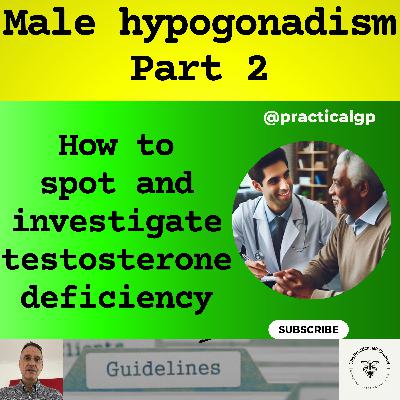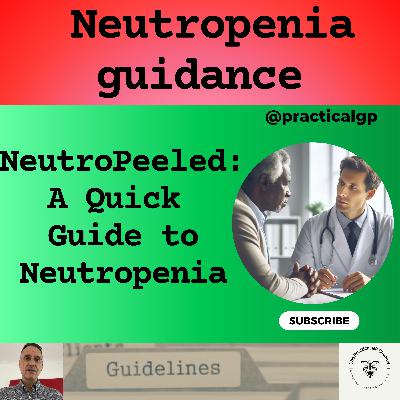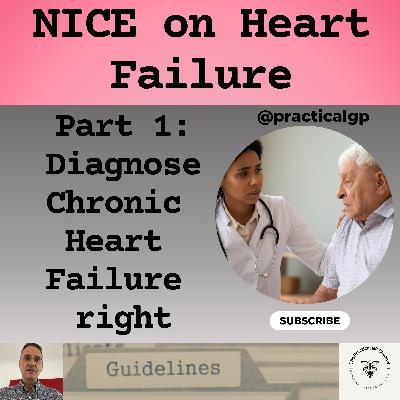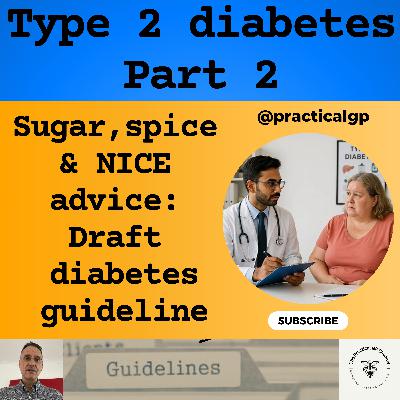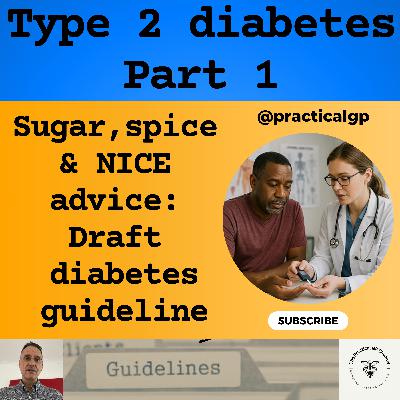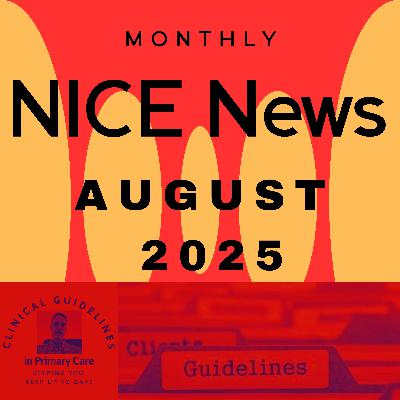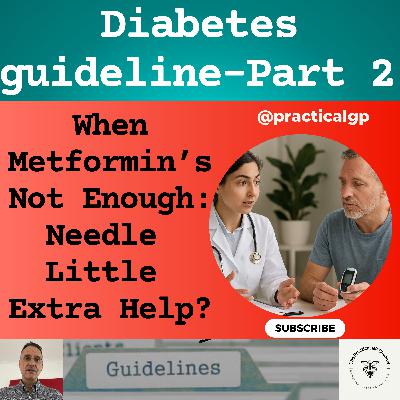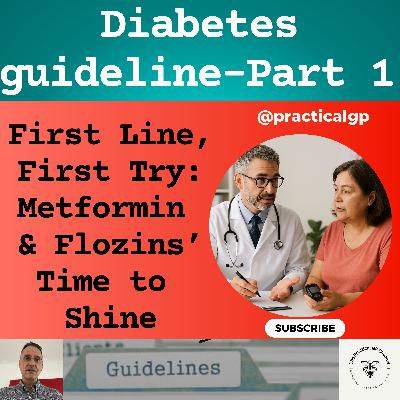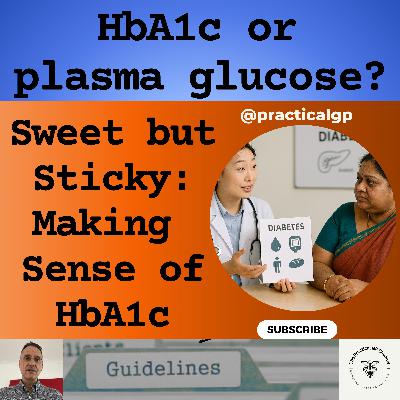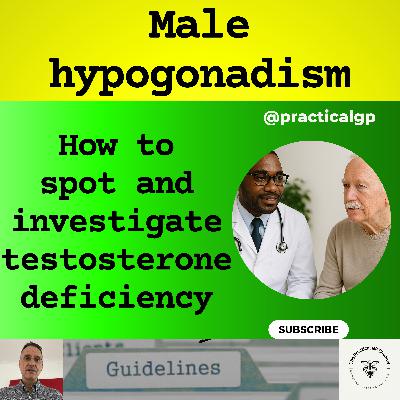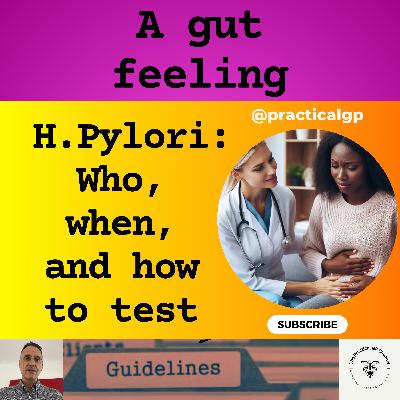Podcast - Man Down: How to Spot and Investigate Low Testosterone - Part 2
Description
The video version of this podcast can be found here:
· https://youtu.be/sUlAwcaUrB0
The first episode can be found here:
· https://youtu.be/nguVbiQc5Ww
This episode makes reference to guidelines produced by the European Association of Urology. The content on this channel reflects my professional interpretation/summary of the guidance and I am in no way affiliated with, employed by or funded/sponsored by them.
My name is Fernando Florido and I am a General Practitioner in the United Kingdom. In this episode I go through the recommendations by the European Association of Urology (EAU) on male hypogonadism, focusing on what is relevant in Primary Care only. The links to the guideline is in the episode description.
Today’s episode covers the clinical presentation, interpretation of test results, and a brief overview of the management.
The previous episode focused on the definition, classification, causes, and clinical associations of male hypogonadism.
I am not giving medical advice; this video is intended for health care professionals, it is only my summary and my interpretation of the guidelines and you must use your clinical judgement.
Disclaimer:
The Video Content on this channel is for educational purposes and not intended to be a substitute for professional medical advice, diagnosis, or treatment. Always seek the advice of your physician or other qualified health provider with any questions you may have regarding a medical condition. Never disregard professional medical advice or delay in seeking it because of something you have read or seen on this YouTube channel. The statements made throughout this video are not to be used or relied on to diagnose, treat, cure or prevent health conditions.
In addition, transmission of this Content is not intended to create, and receipt by you does not constitute, a physician-patient relationship with Dr Fernando Florido, his employees, agents, independent contractors, or anyone acting on behalf of Dr Fernando Florido.
Intro / outro music: Track: Halfway Through — Broke In Summer [Audio Library Release]
- Music provided by Audio Library Plus
- Watch: https://youtu.be/aBGk6aJM3IU
- Free Download / Stream: https://alplus.io/halfway-through
There is a podcast version of this and other videos that you can access here:
Primary Care guidelines podcast:
· Redcircle: https://redcircle.com/shows/primary-care-guidelines
· Spotify: https://open.spotify.com/show/5BmqS0Ol16oQ7Kr1WYzupK
· Apple podcasts: https://podcasts.apple.com/gb/podcast/primary-care-guidelines/id1608821148
There is a YouTube version of this and other videos that you can access here:
- The Practical GP YouTube Channel:
https://youtube.com/@practicalgp?si=ecJGF5QCuMLQ6hrk
The EAU sexual and reproductive health full guideline can be found here:
· https://uroweb.org/guidelines/sexual-and-reproductive-health/chapter/male-hypogonadism
The EAU pocket guideline can be found here:
Transcript
If you are listening to this podcast on YouTube, for a better experience, switch to the video version. The link is in the top right corner of the video and in the episode description.
Hello and welcome! I’m Fernando, a GP in the UK. In today’s episode, we’ll I go through the recommendations by the European Association of Urology (or EAU) on male hypogonadism, focusing on what is relevant in Primary Care only. The link to the guideline is in the episode description.
In today’s episode, we’ll focus on late-onset hypogonadism, its presentation, interpretation of test results, and a brief overview of the general management.
If you haven’t already, I recommend that you check the previous episode where we cover the definition, classification, causes, and clinical associations of male hypogonadism.
Right, let’s jump into it.
The diagnosis of functional hypogonadism is based on the exclusion of an organic or structural cause. The main causes suggested for functional hypogonadism are obesity, comorbidities and ageing, with the first two accounting for most cases. This is because the evidence shows that chronic comorbidities can interfere with the HP testicular axis leading to functional hypogonadism. In fact, the role of ageing in hypogonadism up to age 80 years seems relatively small.
Late onset hypogonadism is a term that is used, frequently incorrectly to describe the declining testosterone production due to ageing or simply the detection of hypogonadism in adults.
However, the truth is that late onset hypogonadism is in fact a broad clinical entity including adult-onset forms which can have an organic or functional origin and can be primary or secondary. Late onset hypogonadism is frequently diagnosed in the absence of an identifiable organic cause, and it becomes more prevalent with age. By definition LOH must comprise both persistent specific symptoms and biochemical evidence of testosterone deficiency.
The mainstay of LOH diagnosis includes signs and symptoms consistent with hypogonadism coupled with biochemical evidence of low morning total testosterone levels on two or more occasions, measured in fasting conditions.
In the history, we will take note of specific symptoms associated with hypogonadism. Symptoms can be grouped into three main categories: sexual, physical, and psychological.
Examples of sexual Symptoms include:
- Reduced libido
- Erectile dysfunction
- Fewer spontaneous erections
- Less frequent sexual activity or masturbation and
- Delayed ejaculation
Examples of Physical Symptoms are
- Reduced ability to perform vigorous activities
- Difficulty walking more than 1 kilometre
- Hot flushes
- Lower energy levels and
- Reduced physical strength
And finally, examples of Psychological Symptoms include
- Low mood
- Loss of motivation
- General fatigue
- Difficulty concentrating and
- sleep disturbances
As we can see, some of these symptoms are non-specific and need to be taken in context with the clinical and biochemical state. Also, headache and/or visual disturbance may indicate a pituitary related disorder.
As part of the physical examination, BMI and the measurement of waist circumference are strongly recommended for everyone. This is because of the strong association between hypogonadism and obesity. Testicular and penile size, as well the presence of sexual secondary characteristics can also provide useful information regarding the overall androgen status. Finally, digital rectal examination (DRE) should be performed before testosterone therapy or to support suspicion of hypogonadism where we would normally expect reduced prostatic volume.
How should we investigate male hypogonadism? The main initial test is obviously serum testosterone.
Testosterone levels are produced in a circadian variation, which may persist in ageing men. Testosterone levels are also potentially influenced by food intake therefore, serum total testosterone should be measured in fasting conditions and in the morning, usually between 07.00 and 11.00 o’clock. A confirmatory measurement should always be undertaken in the case of an abnormal value.
A testosterone of 12 nmol/L should be considered as a possible threshold for starting testosterone therapy in the presence of typical symptoms.
If abnormal total testosterone levels are found, we should check LH and FSH along with prolactin (PRL) in order to investigate possible underlying conditions and exclude possible organic causes. Let’s look at these tests individually:
FSH and LH levels can help differentiate between the diagnosis of primary or secondary hypogonadism. In primary hypogonadism, testosterone will be low and gonadotropins will be high, In secondary hypogonadism, testosterone will be low and gonadotropins will be low or inappropriately normal.
Due to its negative influence on libido, PRL should also be considered as a first-line screening test in patients with reduced sexual desire.
In addition, contrast-enhanced pituita

